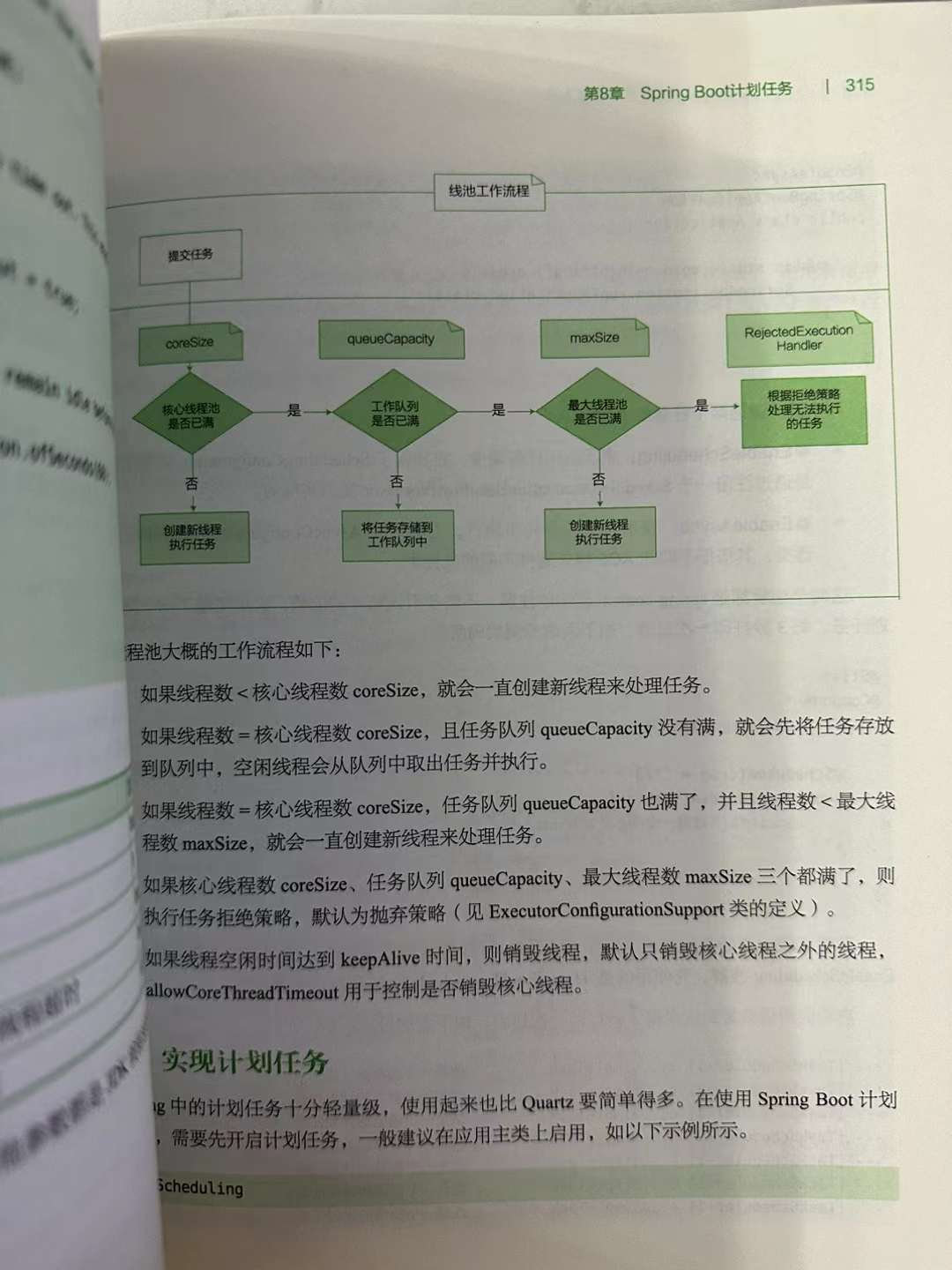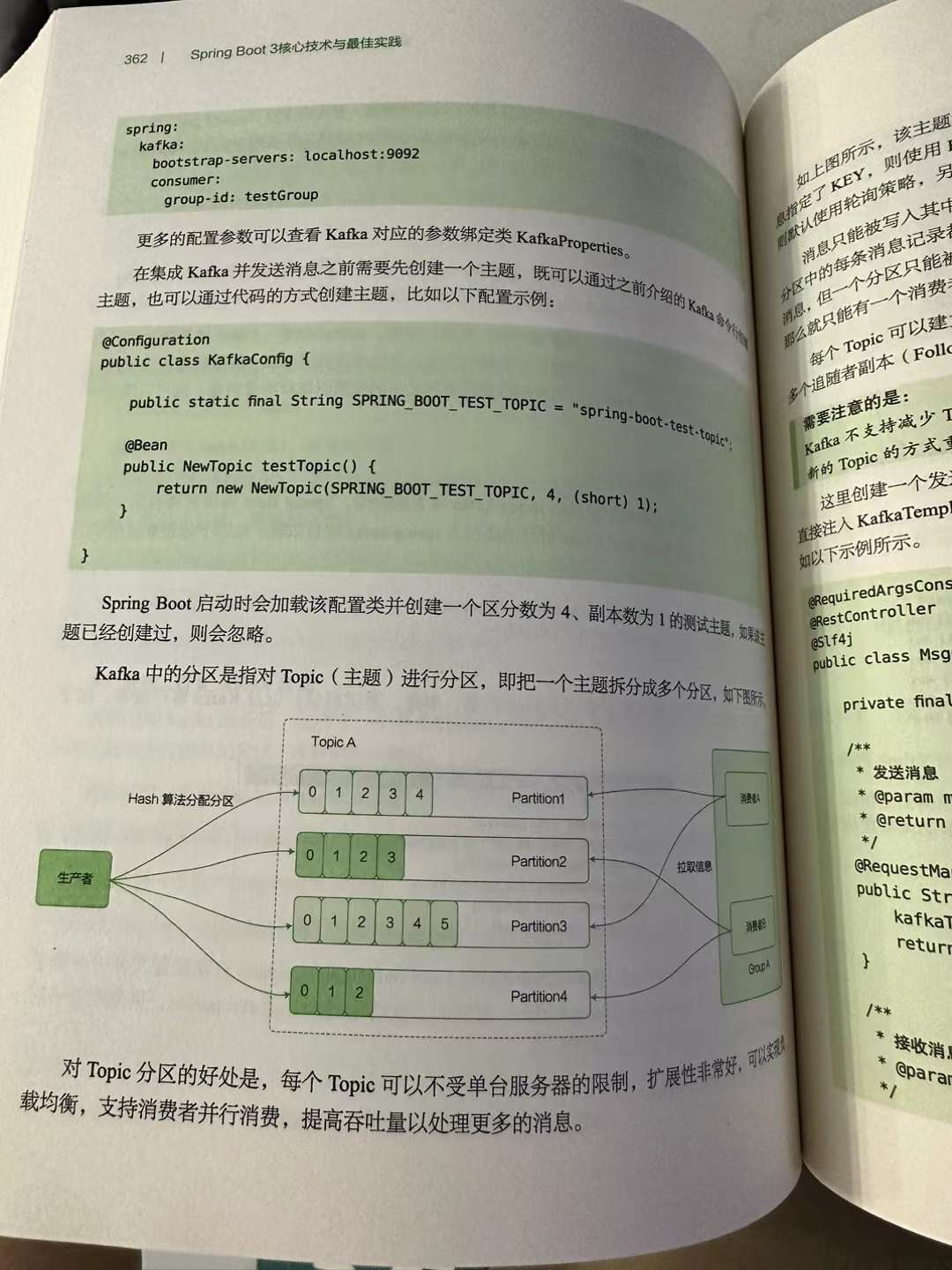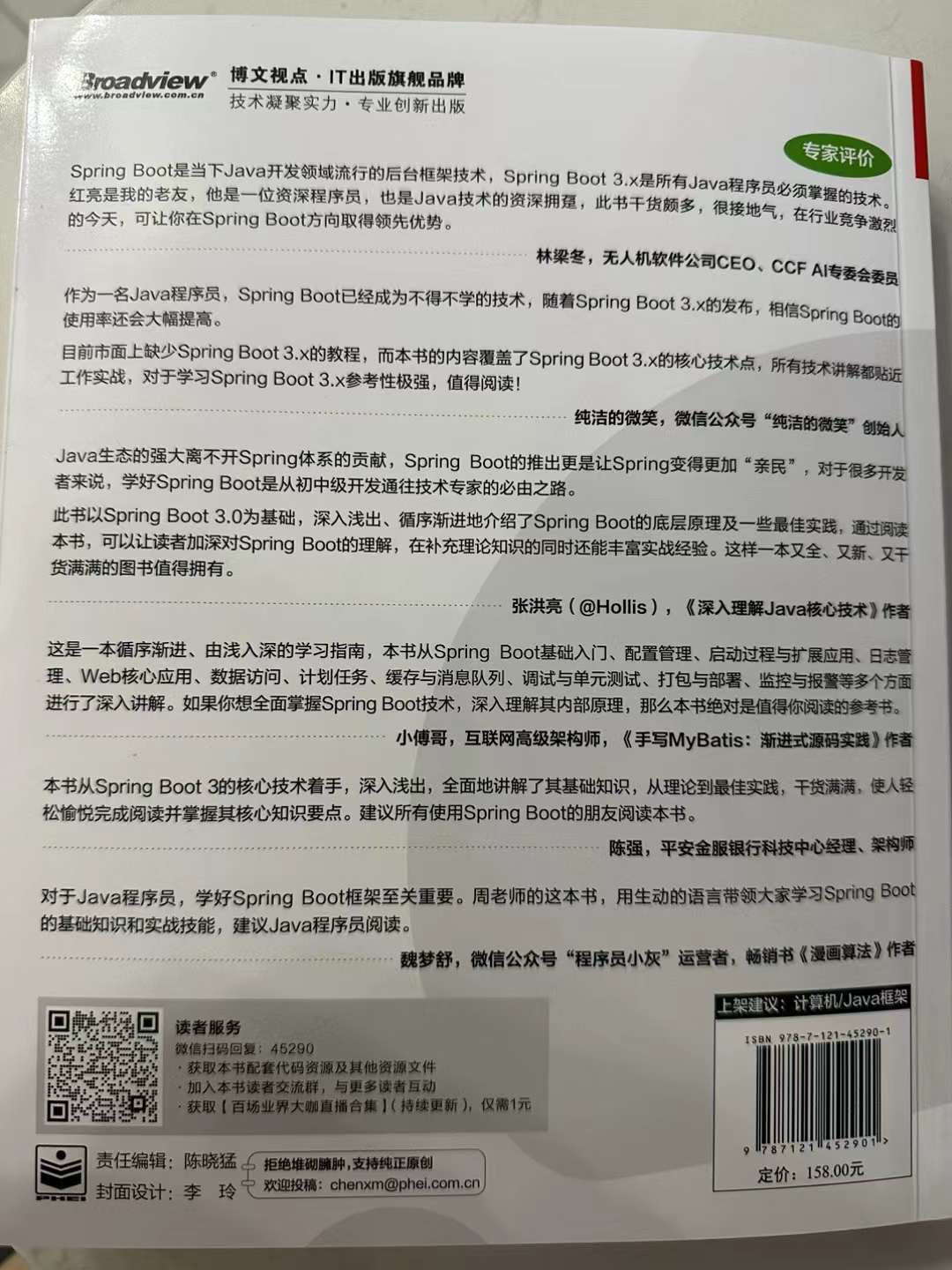Hello everyone, I am Brother R.
My new book " Spring Boot 3 Core Technology and Best Practical Combat " has been polished for more than a year, and it is finally on the market today. The price is 158 yuan. It was just launched today and there is a 50% discount promotion . It is less than 80 yuan to get on the car. This may be the cheapest on the whole network It's time, a rare opportunity, don't miss it if you want to embrace Spring Boot 3.0.

The article hasn't been posted yet, but there are already old fans getting on the car, true love. . .

Why learn Spring Boot?
Spring, as a universal framework in the Java development world, once formed SSH with Struts2 and Hibernate framework, and became the troika of Java Web development. Around 2013, it formed SSM with Spring MVC and MyBatis framework, becoming a new generation of web development framework family bucket, which has been popular until now.
In order to simplify the difficulty of getting started with the Spring framework, the Spring Boot framework was born in 2014, which can help developers use Spring components more easily and quickly. It is a higher-level framework than Spring, Spring MVC and other frameworks. It needs to rely on Native frameworks such as Spring and Spring MVC cannot exist independently.
Learning Spring Boot can simplify the difficulty of using Spring basic components, or learn the basis of Spring Cloud microservice framework, because the basis of Spring Cloud is Spring Boot.
Vaadin recently released a research report on the state of Java in the enterprise:
Among them, Spring Boot has surpassed Spring to become the most popular Java back-end framework:

Although Spring Boot is based on Spring, what this chart wants to express is that more and more developers now choose to use Spring based on the out-of-the-box Spring Boot instead of using the original Spring directly.
Since Spring Boot represents the real needs of the enterprise, it will appear on the job interview skills list of Java engineers and architects, and Spring Boot is almost a must-have skill.
Therefore, to become a qualified Java programmer, you must learn the Spring family bucket, and Spring Boot is the only way to go.
The origin of this book
Brother R first came into contact with and learned the Spring Boot framework in 2016. After work, he would often chat with his colleagues about the latest Java technology after dinner. The Spring Boot framework was one of them. Although it was not widely used at that time, it was It was very hot, and then gradually became a hot Java framework.
Since 2016, Brother R has been honored to be responsible for and participate in multiple system refactorings of the company, including the transformation from the SSM framework update to the Spring Boot framework, as well as the design of the microservice system based on the Spring Cloud framework And research and development, the foundation of the Spring Cloud framework is based on the Spring Boot framework.
In years of actual development and architecture work, Brother R has accumulated a lot of experience in using the Spring Boot framework, and has also witnessed the development history of Spring Boot 1.x ~ 3.x.
Why did you write this book?
1. Spring Boot has been developed for nearly ten years, and the latest version has been released to 3.x. Its underlying implementation logic and usage methods have undergone earth-shaking changes. At the same time, each version of Spring Boot has ceased maintenance one after another. , most versions can no longer meet the needs of technical updates.
2. Although Brother R has mastered the Spring Boot framework proficiently, under its continuous development, some knowledge points will be updated without knowing it until he realizes it when he makes a mistake, which greatly affects work efficiency.
3. Many books and blogs on the market are based on Spring Boot low-version applications. Even if there is the latest Spring Boot technology, it is still messy everywhere, and there is no systematic sorting, interpretation and application of the latest technical points. Continuing to learn low-version applications will bring unnecessary knowledge update costs to many beginners, and will also take many detours.
In view of the above reasons and the lack of systematic learning materials about Spring Boot 3.x on the market, Brother R wrote this book to fill in the gaps and help domestic Java developers to learn, understand and use the latest Spring Boot technology correctly .
Brother R has written some blog tutorials on the Spring Boot framework since 2017. I thought publishing this book would be quite smooth, but the result is far from as simple as imagined. There is no heavy ideological burden on blogging, so writing is more casual, messy, and unsystematic, and there is still a long way to go to publish systematic books, and some blog content is outdated, so it can only be used as a cornerstone.
In order to write this book, Brother R spent a huge amount of time for nearly a year, taking the Spring Boot 3.0 milestone version as the starting point, further polishing, strengthening and perfecting on the basis of it, and adding more than 90% of the new content , After the official version is released, check and revise, and finally form the outline and learning system of this book.
book catalog
This book has 12 chapters in total, which is a learning process from shallow to deep, step by step.
Chapter 1 is an introduction to the basics of Spring Boot, which mainly introduces the basic knowledge of Spring Boot, including background, introduction, core features, core modules, core ideas, version selection, and the use of related tools such as Maven and Spring Boot CLI. application cases.
Chapter 2 is Spring Boot configuration management, which mainly introduces various configuration techniques in Spring Boot applications, including configuration classes, configuration files, external configuration, configuration binding, random configuration, import configuration, multi-document configuration, Profiles configuration, loading Mechanism, configuration encryption, and configuration migration are helpful for the study of subsequent chapters.
Chapter 3 is Spring Boot Starters and automatic configuration. It mainly introduces the introduction and application of Spring Boot Starter in all aspects, including naming conventions, classifications, automatic configuration principles and extension mechanisms. Define a Spring Boot Starter.
Chapter 4 is the Spring Boot startup process and extended applications. It mainly introduces the Spring Boot startup process, including the boot method, startup entry method, startup process source code analysis, and rich extended applications during the startup process, including startup logs, startup patterns, Launch failure analysis, launch events and listeners, global lazy loading, launch runners, and more.
Chapter 5 is Spring Boot log management, which mainly introduces the use of Spring Boot logs, including log format, log file, log level, log grouping, log archiving, custom log configuration files, switching log framework, outputting colored logs, etc.
Chapter 6 is the Spring Boot Web core application, which is the most basic and core part of the Spring Boot project, including embedded containers, registration of Web components, static resource processing, template engines, exception handling, parameter validation, internationalization, and cross-domain , distributed session, security, REST service call and other commonly used Web technology principle introduction, integration and application.
Chapter 7 is Spring Boot data access, which mainly introduces the integrated application of Spring Boot and relational and NoSQL databases, including the introduction of data sources, connection pools, transaction management, Spring Data JPA, MyBatis, MyBatis-Plus, Redis, MongoDB, and Elasticsearch , integration and application.
Chapter 8 is Spring Boot scheduled tasks, which mainly introduces the application of scheduled tasks in Spring Boot, including the introduction, integration and application of planned tasks in Spring and Quartz scheduled tasks.
Chapter 9 is Spring Boot cache and message queue, which mainly introduces the application of cache and message queue in Spring Boot, the introduction of cache principle mechanism and the realization and integration of Redis cache, the introduction of message queue principle and the principle introduction and integration of ActiveMQ, RabbitMQ and Kafka with application.
Chapter 10 is Spring Boot debugging and unit testing. It mainly introduces the debugging methods of Spring Boot applications, the detailed introduction and use of developer tools, and how to do unit testing in Spring Boot applications.
Chapter 11 is Spring Boot packaging and deployment, which mainly introduces the packaging methods of Spring Boot applications, how to run Spring Boot application packages in different ways, and deploy them to Linux and Docker containers in different ways, including Spring Boot 3.0 supported Construct GraalVM native image application method.
Chapter 12 is Spring Boot monitoring and alarming. It mainly introduces the detailed introduction and use of the Spring Boot Actuator monitoring module, including endpoints, indicators, and the introduction and application of observability technologies supported by Spring Boot 3.0. It also includes the third-party monitoring platform Spring Integration and application of Boot Admin, Prometheus + Grafana.
Features of this book
This book takes the latest Spring Boot 3.0 version as the starting point to interpret the core technology of Spring Boot, including the introduction of the latest core knowledge points, technical principles, application methods, applications integrated with third-party mainstream technologies, etc., and then to service testing, Debugging, deployment and monitoring, etc., one-stop learning and mastering the latest Spring Boot core technology and application practice.
This book has the following characteristics.
1. Comprehensive
This book comprehensively introduces the Spring Boot framework, covering all mainstream knowledge points of Spring Boot, including basic introduction, configuration management, Starters and automatic configuration, startup process and extended applications, Web core applications, Logging logs, relational databases, NoSQL, scheduled tasks , cache, message queue, debugging, unit testing, packaging and deployment, monitoring and alarming, etc. 12 chapters of core content.
2. brand new
The introduction and actual use of this book is the latest main version of Spring Boot 3.0.0. The book is marked with " New changes in Spring Boot 3.0 " and " Spring Boot 3.0+" , so that readers can understand the new features and changes of Spring Boot 3.0 For a more striking realization, readers can also have a comparative reference when migrating from Spring Boot 2.x to 3.x.
3. Practical
This book not only introduces the theoretical knowledge of Spring Boot, but also provides a large number of underlying principle analysis, and provides a large number of practical cases for the integration and application of core knowledge points and third-party mainstream technologies. The combination of theory and practice is clear and easy to understand. So that readers can better absorb and understand.
4. Authority
This book uses Spring Boot official documents and Spring Boot framework source code analysis as the main reference, including milestone version and official version of the document, framework source code, and then supplemented with practice and verification of knowledge points to ensure the authority and correctness of knowledge points sex.
Real shot of this book
The core content of this book uses eye-catching green text and background color . While studying, it can also protect your eyes, and you will not get tired easily. The reading experience is excellent, which is one of the main reasons for the high cost of this book.
Brother R got the sample booklet in advance a few days ago, and I will show you some real photos below.






This book brings together the author's many years of experience, and it is full of dry goods. While learning Spring Boot, you can also learn other Java core technologies, and provide all actual combat source codes. It is recommended that everyone have a copy.
Thanks to all the experts for their recommendations, in no particular order!

First half price discount
The book is priced at 158 yuan, and it was just launched today for a 50% discount promotion . It is less than 80 yuan to get on the bus. This may be the cheapest time on the whole network. This is a rare opportunity. If you want to embrace Spring Boot 3.0, don’t miss it.

Finally, thank you for your support!
PS: It coincides with the 423 World Book Day recently. If you miss this wave of discounts, you still want a 50% discount in the future. Get a book before 423 World Book Day, let's learn together!
Recent hot article recommendation:
1. 1,000+ Java interview questions and answers (2022 latest version)
2. Brilliant! Java coroutines are coming. . .
3. Spring Boot 2.x tutorial, too comprehensive!
4. Don't fill the screen with explosive explosions, try the decorator mode, this is the elegant way! !
5. The latest release of "Java Development Manual (Songshan Edition)", download quickly!
Feel good, don't forget to like + forward!